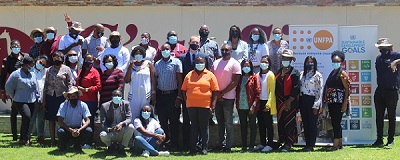
EU and SADC ink agreement – Economic partnership in place

The European Union and six countries of the Southern African Development Community (SADC) last week signed an Economic Partnership Agreement (EPA), the first of its kind between the EU and an African region pursuing the objective of economic integration. The signing by Commissioner for Trade Cecilia Malmström, on behalf of the EU took place in Kasane, Botswana.
In a comment, Commissioner Malmström said: “Trade is a tool to spur economic growth and sustainable development. It is also an important factor for integrating regions and forming stronger bonds between countries. With the Economic Partnership Agreement, we want to base our trade relations with our partners in the Southern African region on commonly agreed, stable rules. Trade has helped lift millions of people from poverty throughout the years. Thanks to agreements like this one, we are preparing the ground for that process to continue.”
Commissioner for International Cooperation and Development, Neven Mimica, added “Fully utilising the economic potential of the private sector and further strengthening the trade is critical for the new global development agenda of the Sustainable Development Goals, this agreement can help us to tap this potential.”
“The Economic Partnership Agreement (EPA) with Botswana, Lesotho, Mozambique, Namibia, South Africa and Swaziland, the so called “SADC EPA group,” is a development-oriented free trade agreement. Other regional agreements could also soon be signed with West Africa and the East African Community,” Malmström said.
The EPA takes account of the different levels of development of each partner. It guarantees Botswana, Lesotho, Mozambique, Namibia, and Swaziland duty-free, quota-free access to the European market. South Africa will also benefit from enhanced market access, going beyond the existing bilateral arrangement. Furthermore, the agreement increases the flexibility of Southern African producers to put together products from components from various countries, without the risk of losing their free access to the EU market. It also provides for a number of protective measures, for instance for nascent, fragile industries or for food security reasons.
The Southern African markets will open gradually and partially to EU exports, in an asymmetric way. In the process of diversifying their economies and broadening production, imports of certain goods are important for Southern African nations – certain industrial parts, seeds and machinery, for instance. The import duties on many of these goods will be significantly reduced, making the products more easily accessible to Southern African entrepreneurs.
A particular advantage has been granted to EU producers of traditional quality products with a worldwide reputation, for example wines and food products – that will now get the exclusive right to use their traditional names, or ‘geographical indications’, in South Africa. Correspondingly, several South African geographical indications will, now be protected on the EU market, these include different types of South African wine such as Stellenbosch and Paarl, along with Rooibos tea and other products.
By signing the agreement, all participants commit to act towards sustainable development, including upholding social and environmental standards. The EPA also establishes a consultation procedure for environmental or labour issues and defines a comprehensive list of areas in which the partners will cooperate to foster sustainable development. In addition, a detailed chapter on development cooperation identifies trade-related areas that could benefit from EU financial support.
The EPA creates joint institutions to support dialogue, smooth handling of all trade issues, and monitoring of the impact of the trade deal. The EU will work with its SADC partners to ensure smooth implementation of the agreement, together with regional and national development cooperation bodies.
Following the signature, the agreement will now be submitted for approval to the European Parliament, and for ratification in the 28 EU Member States according to national ratification procedures and in the Southern African countries.












































